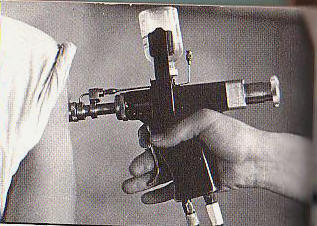|
|
||||||||||||||||||||||||||||||||
|
|
|
Extrahepatic diseases associated with hepatitis C virus- Extrahepatic syndromes have been reported in up to 36% of HCV patients, but the exact prevalence is not known. As many as 36 different syndromes have been reported to be related to HCV, Read More Extrahepatic diseases associated with hepatitis C virus Chronic liver disease and skeletal health (hepatic osteodystrophy) Furthermore, immunosupressants and antiviral agents such as interferon and ribavirin may affect bone metabolism. Brain- Scientists show brain vulnerable to Hepatitis C virus Heart- Hepatitis C Is a Risk Factor for Heart Disease Skin- Cutaneous Manifestations of Hepatitis C Eyes- Retinopathy Common with Interferon Therapy for HCV Infection Neuropathy- HCV neuropathy- Detection of genomic viral RNA Arthritis- HCV Viral infection as a cause of arthritis Treatment side-effects of hepatitis C protease inhibitors Hearing loss related to treatment High Comorbidity Burden of the U.S. Hepatitis C Virus-Infected Population
Source: 2002 National Institutes of Health Consensus Development Statement: MANAGEMENT OF HEPATITIS C Extrahepatic Manifestations of HCV Patients with chronic hepatitis C occasionally present with extrahepatic manifestations or syndromes considered to be of immunologic origin, including arthritis, keratoconjunctivitis sicca, lichen planus, glomerulonephritis, and essential mixed cryoglobulinemia. Cryoglobulins may be detected in the serum of about one-third of patients with HCV, but the clinical features of essential mixed cryoglobulinemia develop in only about 1Ė2 percent of patients. Chronic hepatitis C may be a major underlying cause of porphyria cutanea tarda. Mortality After an average followup of 18 years, a prospective study of patients who received blood transfusions showed no difference in overall mortality between HCV-infected cases and noninfected controls. Liver-related mortality, although rare, was twice as high in the cases (3.2 percent vs. 1.5 percent). A recent European study showed that survival among hepatitis C patients with compensated cirrhosis was 91 percent after 5 years and 79 percent after 10 years. Among patients developing decompensated cirrhosis, however, 5-year survival was only 50 percent.
VA Hepatitis C & Cancer
Guidelines
|
|





